H2 2025: The Web3 Builders' Roadmap
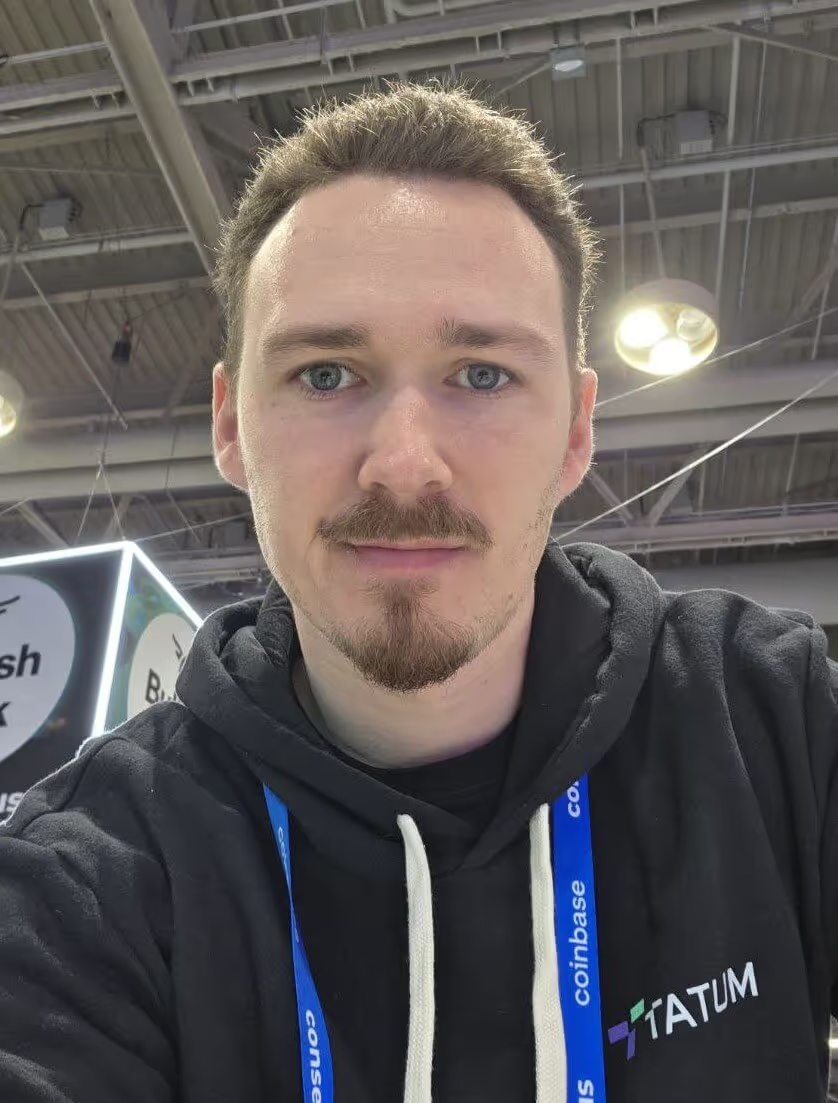

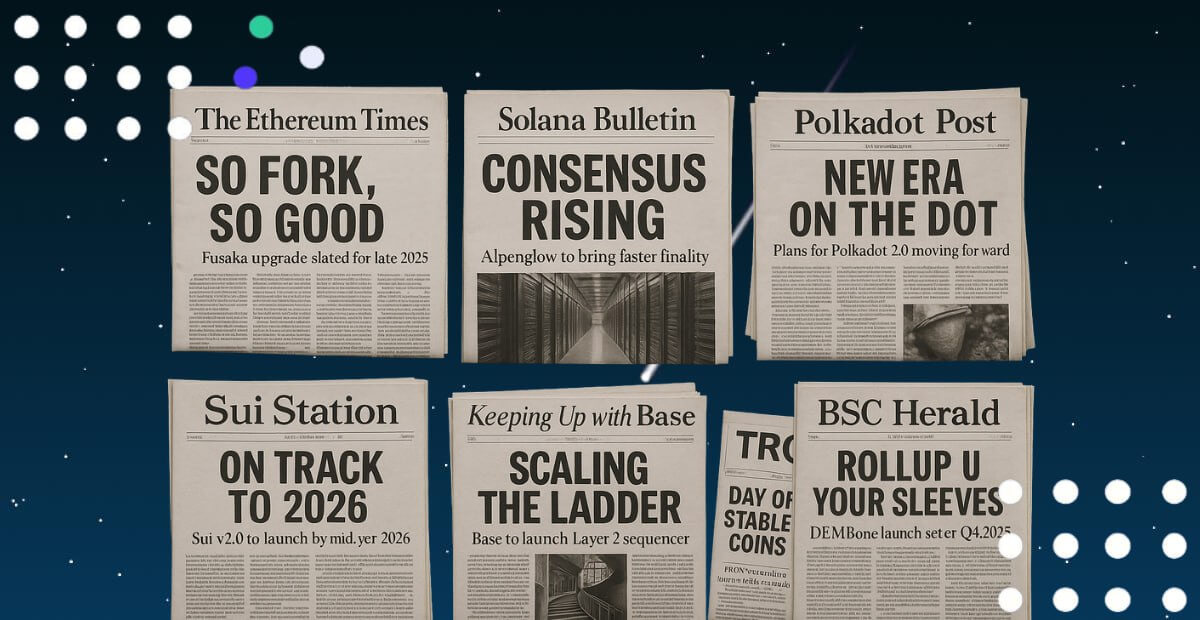
The next six months are packed with some of the most anticipated updates in the blockchain world, both on-chain and off-chain.
Ethereum’s Fusaka upgrade, Solana’s new consensus layer, Avalanche’s HyperSDK-powered subnets, and TRON’s stablecoin dominance are just a few of the highlights.
At the same time, regulators are moving fast: MiCA enforcement ramps up in the EU, the U.S. is finalizing landmark stablecoin legislation, and altcoin ETFs are heading toward key approval deadlines.
Let’s break it down:
Timing: Slated for Q3–Q4 2025, though precise dates remain tentative
PeerDAS (EIP‑7594): Enables Peer-to-peer data availability sampling, crucial for rollups and helps nodes avoid downloading full blob dat
- Blob Capacity Increase: Plans to test 48 blobs per block (vs 6 after Pectra) to substantially lower layer-2 fee
- Gas & Execution Enhancements: EIPs such as 7825 (tx gas cap), 7823 (ModExp cap), 7907 (contract size), and 7918/7762 (blob fee market tweaks) are being scoped
- EVM Object Format (EOF): Was initially planned but removed due to complexity and delay concerns
- Devnet Phase: Fusaka Devnet 2 launched June 23, 2025 for testing with multiple client implementations, supporting the above EIPs
We’ve also added Ethereum Hoodi – the latest testnet in the Ethereum ecosystem – to our Blockchain RPC Gateway. We’ve also extended our faucets collection to Hoodi.
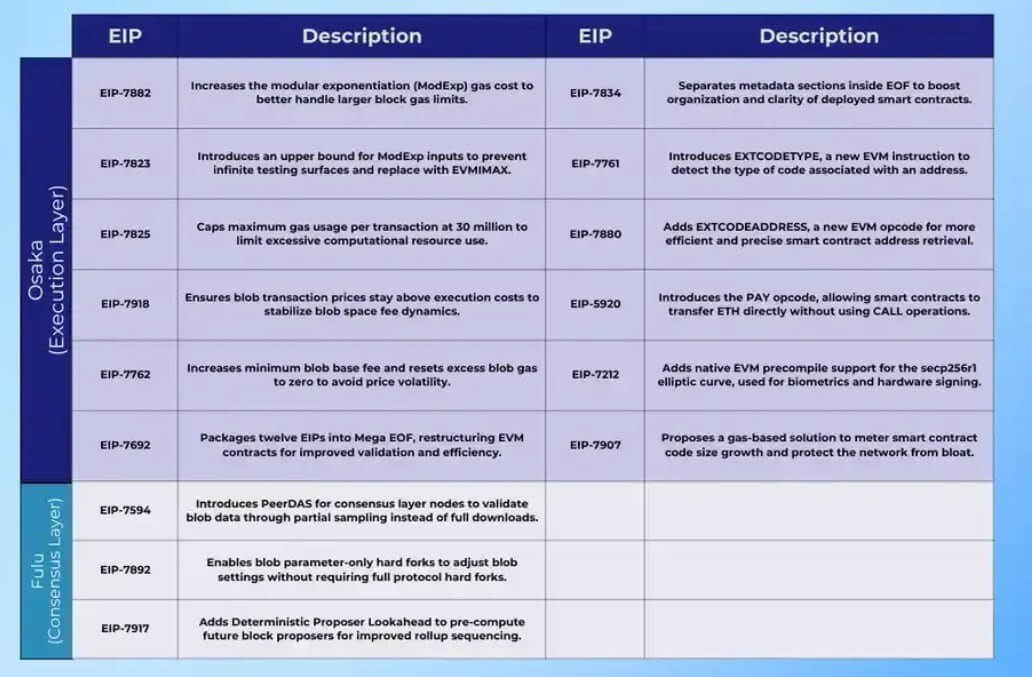
• PeerDAS – Enable rollup scalability with peer-to-peer data sampling
• Blob Capacity – Prepare for 48-blob blocks; improve L2 data posting
• Gas & Execution – Update SDKs to reflect new gas caps and fee logic
• Devnet Testing – Deploy and test blob-aware modules using Fusaka Devnet
Timing: Slated for Q3–Q4 2025, currently undergoing internal testing and staging across validator testnets.

Rotor (Data Propagation Redesign)
- Replaces the Turbine protocol with a single-hop relay using erasure coding.
- Streamlines validator communication and reduces block propagation delays.
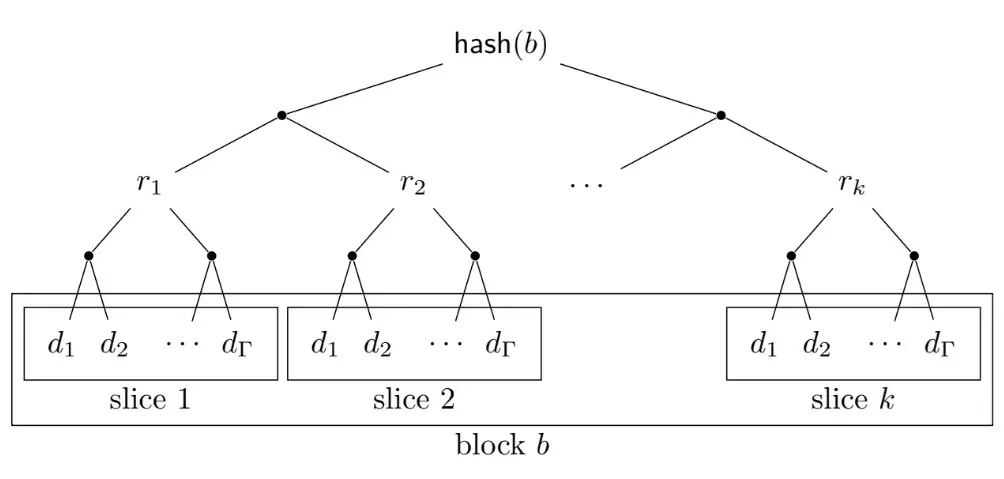
Votor (Consensus Overhaul)
- Replaces Tower BFT and Proof-of-History with off-chain voting.
- Achieves ~150 ms finality (down from 12–15 s), eliminates vote transactions and associated fees.
- Voting certificates are signed and propagated out-of-band, reducing ledger size.
20+20 BFT Resilience Model
- Introduces a novel consensus safety model tolerating 20% malicious + 20% faulty stake, upgrading liveness under stress.
Ledger Slimming
- Off-chain vote certs reduce snapshot sizes, eliminate vote txs, and speed up node syncing and infrastructure deployment.
Backwards Compatibility
-Maintains compatibility with existing smart contracts, clients, and developer tooling—no mandatory rewrites.
• 150ms Finality – Power real-time dApps, bots, games with instant finality
• Vote Certificates – Update validators for external finality attestation
• Ledger Slimming – Optimize light clients and sync layers
• Fault Resilience – Architect apps for higher availability and uptime
Solana is now supported in Tatum’s Data API!
Timing: No base layer forks planned, but significant evolution is happening across L2s, token standards, and smart contract environments like BitVM, Plasma, and Rootstock.
BitVM Mainnet Pilots
- Turing-complete virtual machine leveraging Bitcoin scripts, no forks required.
- Rollups, logic gates, and bridges in pilot stages. Expanding tooling by late 2025.
Plasma Chain Launch
- Confidential sidechain with EVM compatibility and native USDT support.
- Enables DeFi, zero-fee txs, and private apps for Bitcoin users. Public launch expected H2 2025.
Rootstock (RSK) Expansion
- Rootstock continues growing as Bitcoin’s longest-running smart contract platform (EVM-compatible, merge-mined).
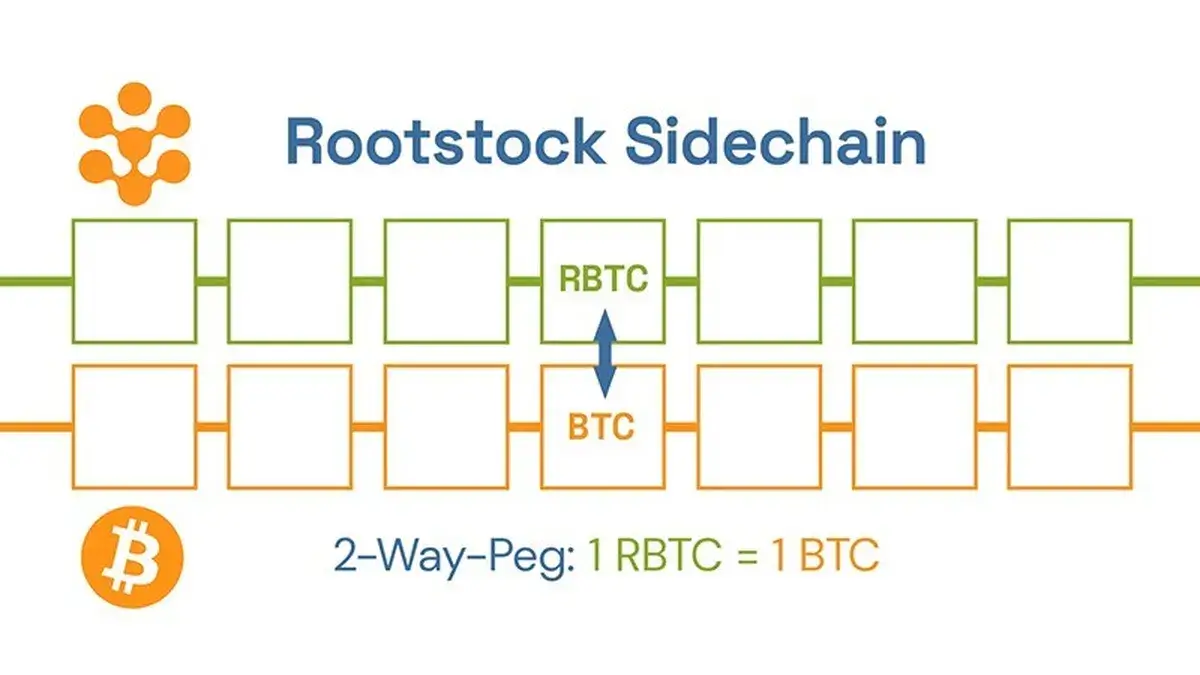
Major updates expected in H2 2025:
Rollup framework on RSK to scale Bitcoin-native apps.
- Enhanced bridges between BTC ↔ RIF assets, and improved dev UX (Truffle/Hardhat support).
- Active integrations for stablecoins, DeFi, and identity protocols (e.g. RIF Name Service).
If you're building on Rootstock, we’ve got you covered!
Ordinals & Runes Growth
- Runes (fungible token protocol) adoption ramps up, improving on BRC-20 inefficiencies.
- Ordinals infrastructure (wallets, marketplaces, APIs) now widely used for collectibles and tokenized media.
No Core Layer Forks (yet)
- Bitcoin’s base layer remains stable with no BIPs activated in H2.
- Taproot and miniscript support growing in smart wallets and scripting tools.
• BitVM – Launch zkRollups and L2 apps without hard forks
• Rootstock – Use EVM tools (Truffle, Hardhat) to build on BTC
• Runes/Ordinals – Deploy NFT + token logic on native Bitcoin
• Plasma Chain – Use BTC-backed smart contracts with zero-gas txs
Timing: Major scaling and infra improvements underway through Q3–Q4 2025 as Base becomes a dominant L2 on Ethereum.
Builder Grants + Onchain Summer 2
- Coinbase-led Onchain Summer returns in August 2025 with 100+ projects launching across consumer dApps, wallets, and social layers.
- Grants distributed via Base-native smart contracts.
OP Stack v2 Adoption
- Base integrates OP Stack upgrades (shared sequencer architecture, modular DA support).
- Prepping for Fault Proofs and decentralization phase in H2.
Verified Contracts Registry
- Open-source Base tooling includes an auto-indexed contract registry for improved dApp discoverability.

• OP Stack v2 – Interoperable rollups with shared sequencing
• Onchain Summer – Target consumer dApps with grants & visibility
• Contract Registry – Improve indexing via verified contract listings
• Fault Proofs – Prepare infra for future decentralized sequencing
Base is now supported in Tatum’s Data API.
Timing: H2 2025 marks the official rollout of Polkadot 2.0, a major evolution away from parachain auctions toward more flexible, on-demand chain deployment. It's a major unlock for builders, especially in governance-heavy or modular use cases.
Polkadot 2.0 Transition
- Moves away from the fixed-slot parachain model.
- Introduces Elastic Coretime – chains pay for blockspace as they use it (pay-as-you-go), removing the auction barrier.
- Ideal for lightweight, event-based, or seasonal apps.
Ink! + WASM Contract Maturity
- Smart contracts written in Rust (via ink!) now widely supported across chains like Astar, Moonbeam, and Phala.
- Expanded tooling for devs with support for Foundry, Substrate SDKs, and OpenBrush.
OpenGov Fully Live
- All DOT holders can now participate in referenda that govern protocol upgrades, treasury funding, and runtime changes.
- Projects can launch DAO-style governance UX on top of the native OpenGov module.
Asynchronous Backing Improvements
- Speeds up block inclusion and lowers finality time across parachains.
- Improves app responsiveness and DeFi UX.
Cross-Chain Interoperability Enhancement
- Continued rollout of XCMP (Cross-Chain Message Passing) across parachains for trustless app-to-app messaging.
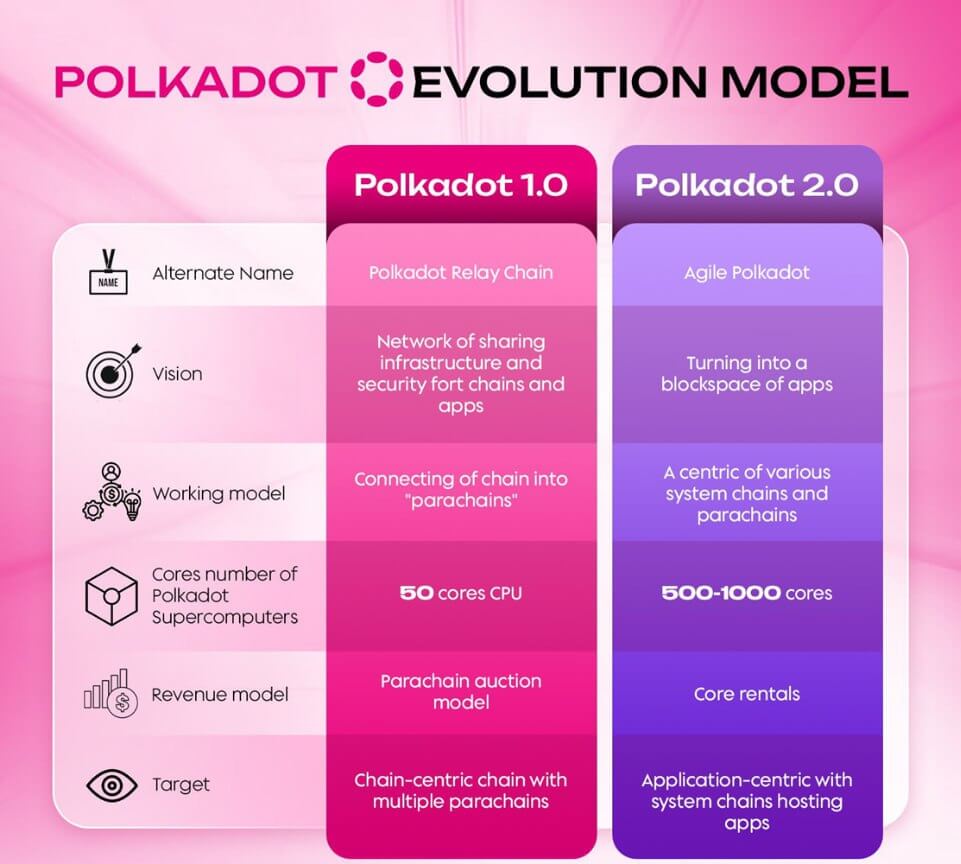
• Elastic Coretime – Deploy parachains without auctions, pay-as-you-go
• Ink! + WASM – Build with Rust-based smart contracts
• OpenGov – Launch DAO UX on top of native referenda modules
• XCMP – Enable true cross-parachain communication
Timing: Following the successful Maxwell Hard Fork in earlier this week on June 30, BSC focuses on usability and developer incentives for H2.
Maxwell Upgrade Complete
- Block time dropped from 1.5s → 0.8s, improving UX for real-time dApps.
- Enhancements to validator sync, block propagation, and latency.
BNB Greenfield Integration
- Storage layer (BNB Greenfield) now supports file-based dApps and NFT asset storage natively.
- Deployed APIs and SDKs for uploading directly to Greenfield and linking from BSC contracts.
BNB Dev Launchpad
- New H2 initiative with grants, hackathons, and bounty programs for AI + DeFi + social use cases.
• 0.8s Finality – Improve DeFi & gaming latency
• Greenfield – Link smart contracts to native file storage
• BNB Launchpad – Join AI/DePIN/socialFi grant ecosystem
• Multi-chain Bridges – Integrate via native ETH/ARB/Linea bridges
Leverage the best of Maxwell with Tatum’s ultra-reliable BSC RPC Gateway.
Timing: TRON continues expanding its position as the largest stablecoin rail, particularly in Asia, Africa, and LATAM, with new features rolling out H2.
Dominant Stablecoin Volume
- TRON processes over $12B+ in daily stablecoin transfers, with a growing share in merchant and remittance rails.
USDT + Real-World Apps
- Over 50+ financial apps in Asia now natively integrate TRON USDT, focusing on cross-border payments, utility bills, and commerce.
TRON DAO Ecosystem Growth
- Dev grant program reactivated in H2 2025 targeting lending, NFT infra, and permissioned DeFi apps.
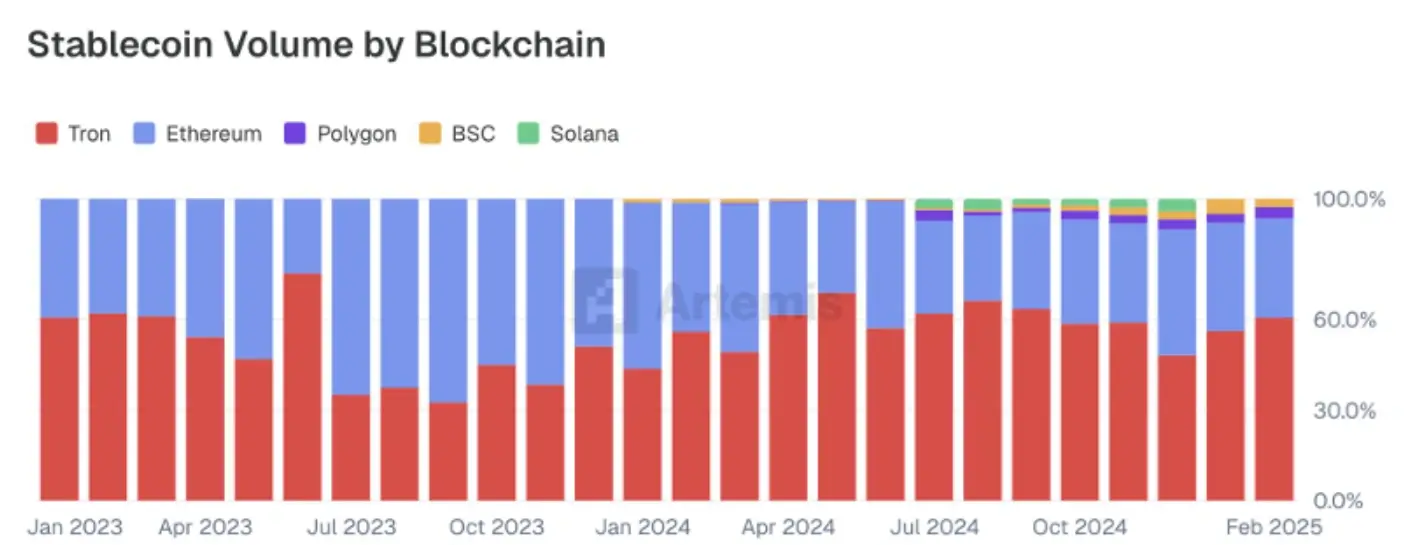
• USDT Payments – Build remittance and merchant tools for APAC
• DAO Grants – Receive funding for utility-based dApps
• Regulated DeFi – Deploy permissioned, compliance-aligned protocols
• High-TPS Infra – Use TRON’s EVM for scalable token apps
Timing: Following Avalanche9000, the network is rapidly expanding appchain and institutional subnet usage across Q3–Q4 2025, with robust tools now live for developers to deploy custom blockchains and verticalized infrastructure.
HyperSDK Production Rollout
- Avalanche’s HyperSDK lets devs launch optimized L1s (custom VMs, gas logic, fees, consensus) in minutes.
- Full production deployment with Rust-based tooling now available, targeting DePIN, gaming, and finance.
Subnets & Avalanche Warp Messaging (AWM)
- Subnets support native cross-chain messaging between Avalanche networks via AWM.
- Major RWA, compliance, and modular compute subnets launching in Q3–Q4 (e.g., Evergreen, IntelliChain).
Evergreen Subnets
- Institutional DeFi pilots: private validator sets, KYC layers, and USDC integrations.
- Used by banks, asset managers, and fintechs as of H2 2025.
C-Chain (EVM) Upgrades
- Avalanche’s default EVM chain now supports higher throughput and custom gas fee logic.
- Compatible with standard Solidity tools like Hardhat, Foundry.
Incentive Program 2.0
- Avalanche Foundation relaunched grants and gas incentives for subnets, RWA, and gaming projects starting August 2025.
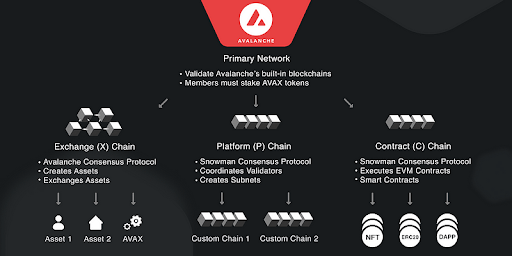
• HyperSDK – Launch custom chains using modular Rust stack
• Subnets + AWM – Enable trustless cross-subnet messaging
• C-Chain – Extend Solidity apps with custom logic
• Institutional Infra – Build compliant RWA or DeFi systems
Timing: Sui is rolling out multiple protocol and ecosystem upgrades throughout Q3–Q4 2025, focusing on scalability, dev experience, and real-world adoption.
zkLogin Ecosystem Expansion
- Sui’s native zkLogin is gaining traction with dozens of live dApps.
- Enables passwordless onboarding via Google, Apple, Facebook, etc., while maintaining user privacy.
- SDK updates and new providers coming in late 2025.
Dynamic NFTs + Kiosk Standard
- Sui Kiosk is now the default NFT marketplace standard on the network.
- Devs can program royalties, nested assets, and trade rules directly into NFTs—ideal for gaming and loyalty systems.
Parallel Execution Enhancements
- Execution engine optimizations in H2 will push throughput further using Move’s object-based parallelism.
- Several DeFi and gaming projects are testing 10,000+ TPS workloads.
Sui Native Stablecoins + DeFi Expansion
- Scallop Protocol launching Sui-native USD stablecoin.
- More AMMs, yield vaults, and RWA experiments planned by year-end.
zkBridge Integration (Testnet → Mainnet)
- Cross-chain zkBridge is moving from testnet to mainnet in Q4 2025.
- Will allow verified Sui ↔ Ethereum and Sui ↔ Bitcoin asset transfers without trusted relays.
• zkLogin – OAuth-powered Web2 → Web3 logins
• Kiosk NFTs – Build modular, composable NFT marketplaces
• Parallel Execution – Thread-safe dApps with concurrent transactions
• zkBridge – Move assets between Sui, ETH, and BTC
GENIUS Act + CLARITY Act expected to pass in Q4 2025:
- Establishes clear federal oversight over stablecoins and digital asset exchanges.
- Introduces “qualified crypto custodian” designation and lightens DeFi dev liability if code is open source & non-custodial.
SEC under new leadership: ETF approvals across BTC, ETH, SOL, XRP, and even DOGE are accelerating (84+ active filings).
IRS rules tightened: Devs working on DAO treasuries and airdrop tools must consider new tax-reporting triggers (Form 1099-DA rollout).
MiCA enforcement begins phasing in across EU states (full by December 2025):
- Custodians, stablecoin issuers, and DeFi front-ends must register and show operational transparency.
- Open-source infrastructure tools and SDKs are exempt if they don’t custody or operate interfaces.
ETN ban for retail lifted in July 2025: retail investors can now access crypto ETPs (BTC, ETH, SOL).
FCA exploring licensing tiers for app developers vs infrastructure providers.
Remains a crypto-forward haven.
Swiss Financial Market Supervisory Authority (FINMA) now fast-tracking approvals for tokenized securities, DAOs, and RWA platforms.
New framework enforces risk disclosures for DeFi apps and limits on uncollateralized lending.
Sandbox licenses available for dApps running programmable stablecoins, social tokens, and GameFi.
Dubai’s VARA (Virtual Asset Regulatory Authority) introduces modular registration for dApp builders, lighter than full VASP licenses.
Builders focused on infra, APIs, or “non-hosted” wallets qualify for streamlined paths.
Actively encouraging regulated stablecoin pilots and cross-border RMB payment channels.
Allowing regulated dApps to test public blockchain use cases under sandbox conditions.
By late 2025, spot ETFs could go live for a broad set of altcoins beyond BTC & ETH, moving into institutional grade finance.
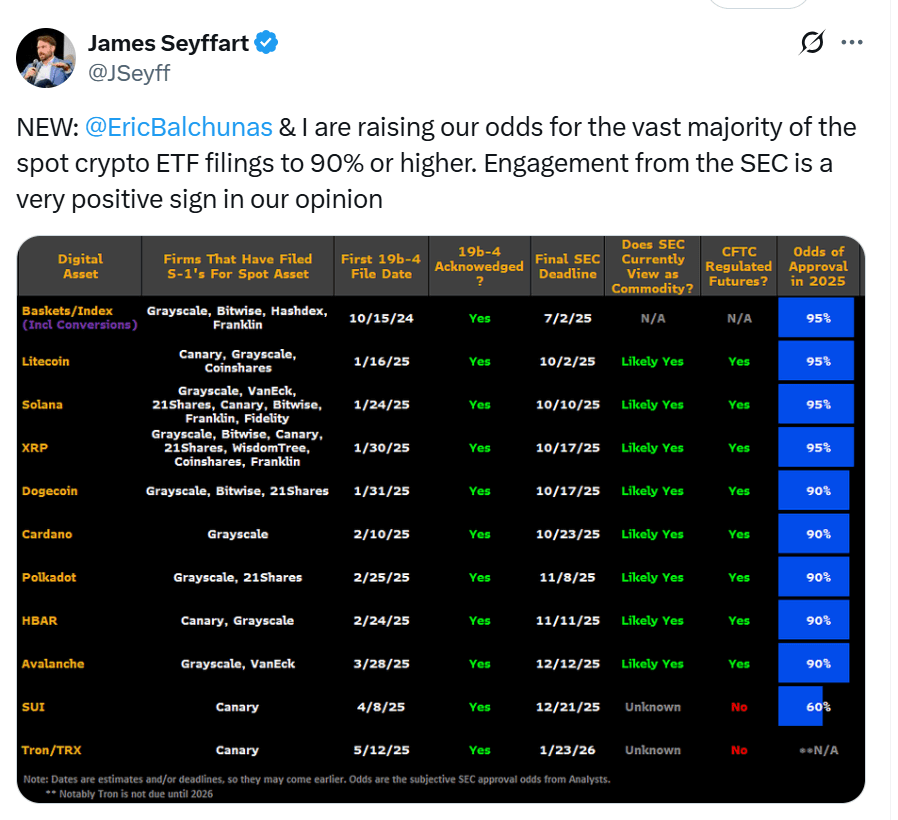
Preparing for Altcoins demand?
The second half of 2025 is a turning point.
The infrastructure for the next era of Web3 is being laid right now.
Meanwhile, regulation is catching up: stablecoin frameworks are solidifying, MiCA is live, and ETFs are pushing crypto deeper into traditional finance.
For builders, this is the moment to future-proof your stack, stay modular, and position your projects for a multichain, multi-regulated world.
At Tatum, we’re here to help you ship faster, scale smarter, and stay compliant, no matter which chain (or regulation) comes next.
Ready to build?
👉 Start with Tatum.
Build blockchain apps faster with a unified framework for 60+ blockchain protocols.